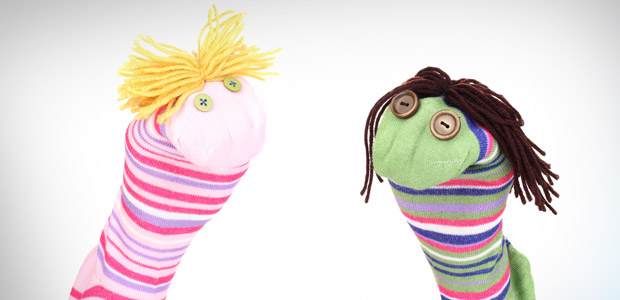Mask Work and Puppetry can incorporate all of the aspects of Storymaking, Storytelling, Myths, Fairytales, metaphor, rituals, symbols, dramatisation and voicework.
Both masks and puppets have been in use from ancient history to present times, they are used across the globe to represent and symbolise many traditions, rituals and holidays. This enthnographic approach means that the masks and puppets can play an important part within society and different cultures.
A simple way to understand how masks have become ingrained in popular culture through history and have inspired some specific puppetry is to look at Commedia dell’Arte. This form of theatre was prevalent in the 16th and 17th Century, originating in Italy. The framework was largely improvisational, but was always based around the same characters which were denoted clearly by masks. These characters are still just as relevant today and are either used directly or as a basis for other characters. They include; Colombina, il Dottore, il Magnifico, il Capitano and possibly the most familiar; Arlecchino and Pulchinella. The latter two characters can be seen in western culture regularly as Harlequin and of course Mr Punch, of Punch and Judy.
The Commedia dell’Arte characters have then inspired puppetry, most commonly with the Punch and Judy puppet shows. These shows have also become multi-cultural, using the same basic mask shape as the original Commedia dell’Arte, but incorporating aspects which are pertinent to the anthropology of different countries and communities.
Puppet shows such as this have shown that puppets are highly appealing to children and to many adults also. In the 21st century we now have The Muppets, Sooty and Sweep and many more, all of whom still incorporate the basic characters and sense of fun which could be found within Commedia dell’Arte.
The puppets seen in modern day may have evolved to animals, monsters and dinosaurs alongside the familiar faces, but they can all be incorporated easily into therapies as a tool for the individual to express themselves through a ‘me, but not me’ medium.
Although Punch and Judy shows may not be as easily accessible as they may have been 60 years ago, you can still see these at some holiday spots, museums and some touring companies. To see Commedia dell’Art in action on a grand scale, you can visit Venice during Carnevale in February/March when all of the masks are used for the festival. Carnevale dates back to the early 1100’s and barring a break when the use of masks and the festival itself was banned in the late 1700’s, is still prevalent today. Carnevale allowed the Venetians not only to indulge their decadent lifestyle with trickery, excessive eating/drinking but also allowed the social status’ within Venice to be tested. Servants could become wealthy patricians and those of a higher social status could become servants. Roles could be tested, played with and explored in an accepted way which would have been extremely inappropriate outside of the Carnevale.
Just as masks with a familiar face can be appealing, masks which are completely blank are also a popular choice. A Mask or Puppet can take on which ever character or personality that is impressed onto them. The individual can create something which can be highly personal to them either as a character or be representative of them or their situation.
The Mask or Puppet can be altered to suit as the individual’s therapeutic exploration and journey changes and grows.
Similarly to the Arts Therapies as a whole, the Puppetry and Mask Work can be implemented by the client as part of their therapy or as a stand-alone exercise.
I.T.S Therapists are happy to incorporate masks and puppetry into their practice. If you would like to know more of may be interested in mask work and puppetry within therapy, then do get in touch.
Get in touch to work with us









